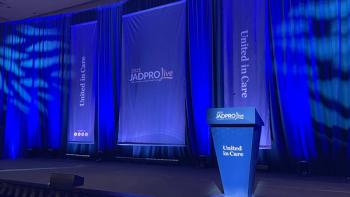
How CDK4/6 Inhibitors Enable More Personalized Treatment in HR+ mBC
The number of CDK4/6-targeting treatment options available for patients with HR-positive breast cancer allows providers to personalize treatment.
While there are multiple treatment paths available for patients with hormone receptor (HR)–positive metastatic breast cancer, selecting the right one can vary by patient.
In a recent Case-Based Roundtable conversation with Oncology Nursing News, presenter Kimberly Podsada, BSN, RN, MSN, NP-C, CNS, and peer advanced practice providers (APPs) discussed factors that affect treatment decisions.
Podsada, a nurse practitioner at the University of California San Diego, mentioned in an interview after the event that prior history of nausea, comorbidities, and lifestyle are among the factors that may determine which CDK4/6 inhibitor is most suitable for a patient.
Additionally, she found that many of the APPs who participated in the event were most concerned with adverse effects (AEs) when treating patients using CDK4/6 inhibitors, adding that many participants from rural areas struggled with ensuring patients had access to care.
Oncology Nursing News: How do patients’ risk categories affect treatment decisions for those with HR-positive metastatic breast cancer?
Podsada: We have the luxury now of having a variety of CDK4/6 inhibitors to choose from, and we really can tailor our choice based on the patient’s comorbidities, lifestyle obstacles, preferences—we can really look at the whole picture of the patient. How are their kidneys functioning? How is their liver functioning? What sort of support services do they have? Are they going to be able to get to clinic?
[We have] our first-line CDK4/6 inhibitors, and all 3 have demonstrated improvements in that setting. Yet, again, there is provider preference, and now I think we can really look at the individual as well and make that decision based on them and their preferences.
What patient characteristics or preferences would you take into consideration when selecting a CDK4/6 inhibitor?
One of the things I like to assess about my patients are the baseline issues that they’re already bringing into clinic: “I already have a sensitive gut.” “Oh, I had really bad nausea with pregnancy.” “I’m already on an immunosuppressant for my rheumatoid arthritis.” All of these things I’d be looking at and making a decision.
If someone’s coming off of chemotherapy, let’s say, and they still have [gastrointestinal] issues and they were never able to get on top of their diarrhea—am I going to prescribe abemaciclib? I don’t know. But if someone is already neutropenic because of previous therapies or other medications, am I going to prescribe [palbociclib] or [ribociclib] because of the risk of neutropenia?
It’s a very detailed conversation with the individual and looking at the whole person honestly and thinking about that, not just having your personal preference of “This is the drug I always want to prescribe,” but looking at the patient and going, “How is this medication going to impact my patient’s quality of life and ability to get the best care I want to give her or him?”
What challenges do nurses and APPs still face when navigating treatment with CDK4/6 inhibitors?
There seemed to be a real unanimous concern about managing adverse events [at the discussion]. Many of the providers [that the APPs in attendance of the discussion] work with would choose what they’re comfortable with because they know how to manage those symptoms. It’s when other meds get introduced that maybe the doctor or the nurse is not familiar with [that] it’s overwhelming.
The learning curve [is] too steep. Over time, I think they’ve all learned to manage the [AEs], but it really seemed like a lot of them were discussing managing [AEs], and that still seemed to be the biggest challenge for them.
What other factors come into play when determining the best treatment path for patients with HR-positive breast cancer?
Some of [the participants of the discussion] were also in more rural communities. It’s like, “How are we going to get someone’s labs done? How are we going to get an ECG done? How are we going to get them back for visits, incorporating video visits or using a lot of the prompts or reminders to call the patient to check on them? And do you know that you have your labs?” It seems to take a lot of handholding up front, and then things get better, which has always been my practice.
I’ve always felt like if you’re giving a lot of attention and focus on [AEs] early on, patients like that support, and then they get into the rhythm and the routine of things, and they don’t need as much help. They just need to get over that hump of also learning the drug and the [AEs] that they have.
This transcript has been edited for clarity and conciseness.
Newsletter
Knowledge is power. Don’t miss the most recent breakthroughs in cancer care.


















































































